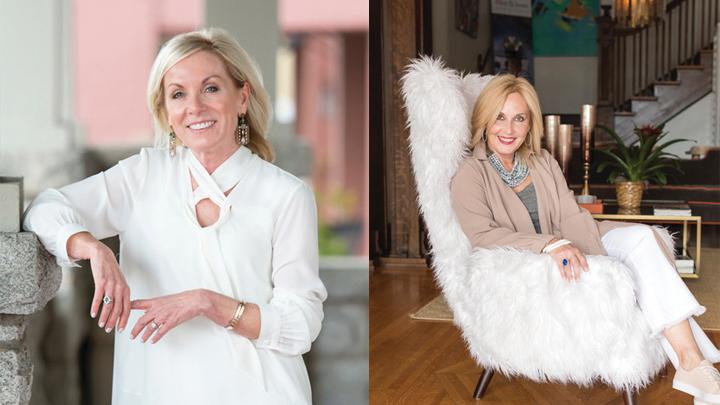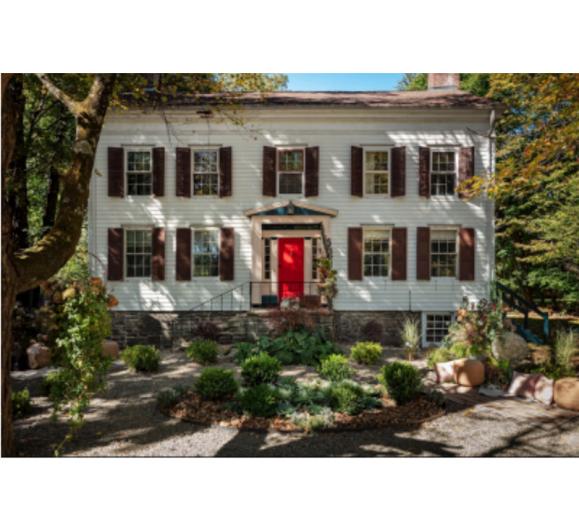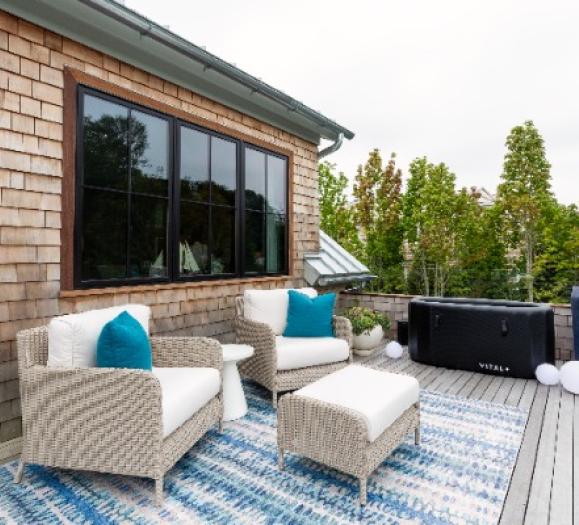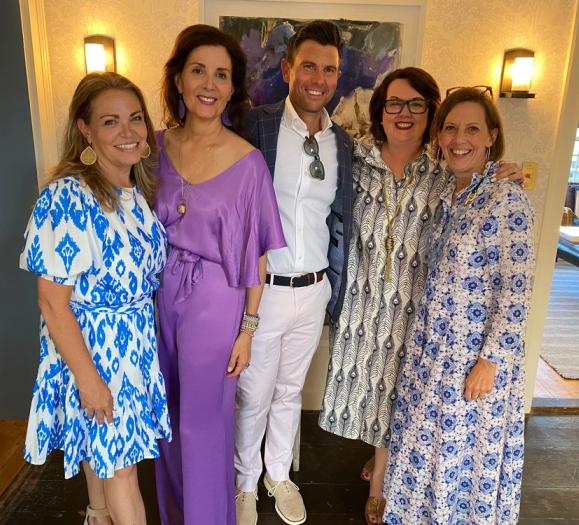If you’re ever in downtown High Point, NC — and we know many of you are — you’ll want to make a side trip the next time you’re visiting Market to see how Allen & James’ interior design/retail business has thrived in this community.
Right on Main St., just a stone’s throw from the center of the home furnishings industry in a 120-year-old house-turned-business, Patti Allen and Stephanie James set up their eponymous design studio and subsequent retail shop four-and-a-half and two years ago, respectively.
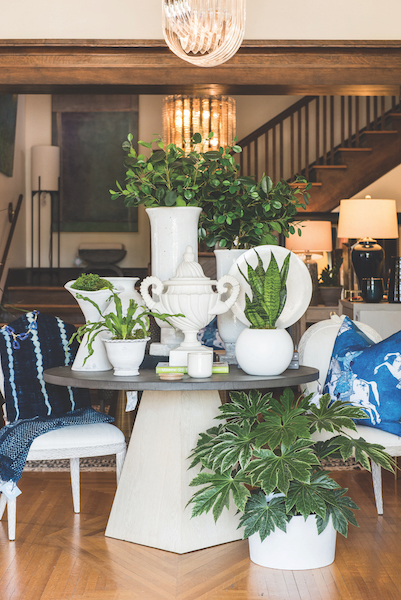
Prior to opening Allen & James, the two designers offered design services through another retailer, so retail and interior design weren’t new to either of them.
On their own, however, there was a lot to learn. Yet, they’ve seen rapid growth. “Four years ago, we had a card table in one room that we leased in the house,” says James. “Today we have 15 employees.” And the Allen & James retail shop now encompasses the majority of the house. The retail portion of their business evolved from the need to showcase product and capture potential clients’ attention, James adds. “We needed something to sell to the people who were coming in to see us.”
A Curated Retail Mix
While the majority of the Allen & James retail showroom is made up of home furnishings and decor — local art is a huge draw — the duo also showcases giftier items, such as jewelry, in displays as well. “We’re trying to be wise about that,” Allen says, noting that carrying gift items allows the shop to leverage events such as birthdays and anniversaries. “Our retail client is different than our design client, so we benefit from having a mixture. Every year that gets better.”
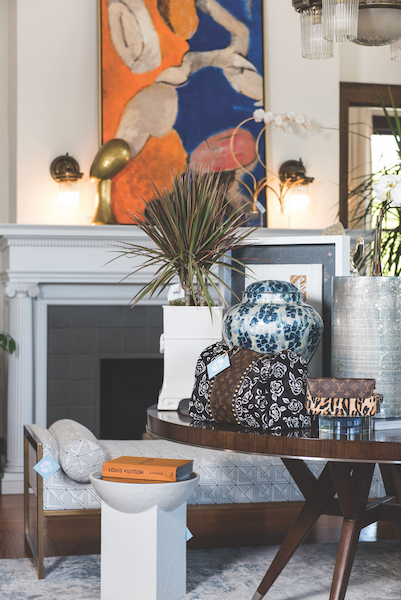
How do they determine products that are the right fit for their shop? They buy what they like. “We don’t try to be everything to everyone,” says James. “When shoppers come here, they can find something they love from our eye.”
One thing both Allen and James love is plants. Most recently, they’ve added a new retail segment to the mix to cover this category — Fiddle Figs — where customers can buy outdoor and indoor plantings. According to James, a third to half of their customers come in through Fiddle Figs, which they opened to fill the need for plants in their neighborhood shortly after the local nursery closed. “We love plants and we had the opportunity to engage a local master gardener,” says James.
“People really see the importance of it,” adds Allen.
The two have seen the retail part of their business grow rapidly during the last two years, and the gardening center has accelerated that growth even more, bringing in customers that wouldn’t have found them otherwise.
The Retail-Design Connection
Not only has the retail part of their business helped bring in potential new design clients, it’s allowed them to provide even better service on existing design projects. For example, having decor and art available allows design clients to come in and shop for those finishing details for the home, and they can try them on for size. “We want people to try things,” says Allen. “It’s hard to find nice accessories, and people want a complete home today without having to go to too many places. If we can get in there with them and place the pieces for them to try out for 24 to 48 hours, that works best.”
While the more established design side of the business is still the “bread and butter,” says James, the retail store also gives the designers the ability to create experiences that delight their retail customers and keep them coming back. “We do a lot of pop-ups,” she notes, such as cocktail parties, meet the designer nights, art events and more. Or they did, before coronavirus.
While the shop is open to the public, events are on hold for the near future. They also leverage social media, such as Instagram and Facebook, to promote both sides of the business.
While people are still coming to the store, the two admit, “COVID has been terrible on everyone.” The store was closed for a couple of months, but they’ve seen traffic come back. And they took the “downtime,” if there really is such a thing, to enhance their online presence, adding an e-commerce component to their website. “Online and in-store are two different clients,” says Allen. They are learning the nuances of each of those to deliver what their clients and customers want. “We keep our floor fresh, our marketing going and we’re never afraid to change things up,” she says.
Adds James, “People say they like what we’re doing. We’re not just designers, and having the shop allows us to have creative input in all parts of a client’s life.”



